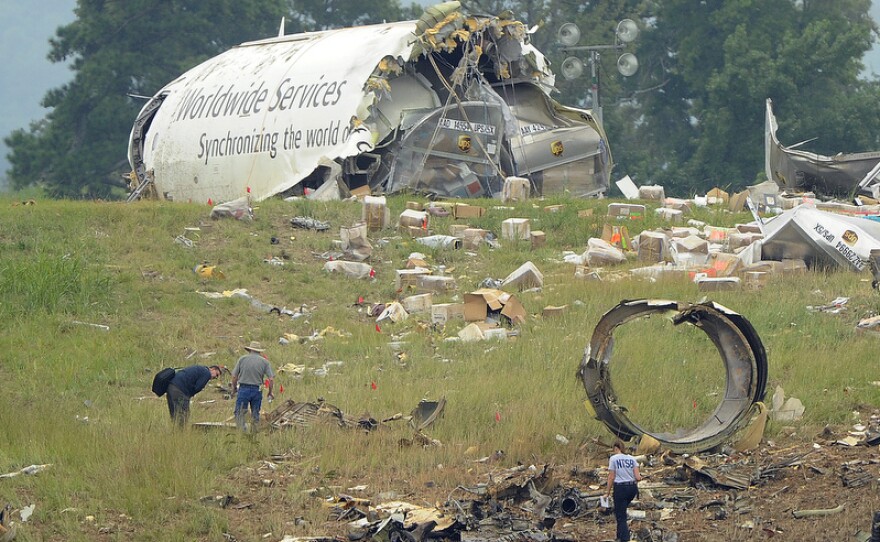The crew of a United Parcel Service Airbus A300 freighter that crashed during an early morning landing at Birmingham, Ala. were forced to make a "non-precision approach" when a computerized landing system became overloaded, investigators told the NTSB on Thursday.
The plane crashed short of Birmingham-Shuttlesworth International Airport in Birmingham, Ala., killing both the pilot and co-pilot.
The New York Times says:
"[Strong] parallels emerged to the crash of an Asiana passenger plane at San Francisco International Airport five weeks earlier: heavy pilot reliance on automation, possible failure to anticipate the limits of it, not enough experience landing without a full instrument system and failure to keep track of key parameters. In the Asiana crash, which killed three people and destroyed a Boeing 777, the issue was airspeed; in the Birmingham crash, of an Airbus A300, it was altitude. The safety board is also looking into fatigue in the Birmingham crash, which came shortly before 5 a.m. and killed both people on board."
The Associated Press says: "The airport's main runway was closed for maintenance, so Captain Cerea Beal Jr. was trying to land on a second, much shorter runway that wasn't equipped with a full instrument landing system to help keep planes from coming in too high or too low."
The Times reports of testimony to the National Transportation Safety Board:
"The early stages of the approach were routine enough that the pilots sent a text message asking their hotel to send a shuttle van to the airport. But the crew, following instructions from air traffic control, had made a course change and that threw off the on-board computer that they were counting on to provide guidance. They did not reprogram the computer, but instead set the auto pilot to an unusually steep descent."
"At 235 feet above the ground, the crew got an alert from a sophisticated 'advanced ground proximity warning system' that the plane was descending too fast, more than 1,500 feet per minute, according to investigators. This system did not sound a more severe alert until after the first impact with trees about seven seconds later. That warning system has drastically cut the number of accidents like this, but it is not foolproof."
The NTSB is also hearing testimony related to possible pilot fatigue, which has long been thought a factor in the August crash.
"[Captain Beal] was flying the plane. He complained to First Officer Shanda Fannin that cargo pilots aren't given as much time to rest between work shifts as federal regulations require for pilots at passenger airlines."
"Fannin agreed. She said she had [a] 'good sleep' the previous night, but woke up tired anyway."
"Crew rest is a complex concept," UPS said in a statement. "And for some, it's easy to jump to the conclusion that a pilot who flies at night must be tired," the company said in a statement. "It's also easy to presume that if they are tired, it's induced by their assigned work schedule. Neither is necessarily accurate."
Copyright 2014 NPR. To see more, visit www.npr.org.






